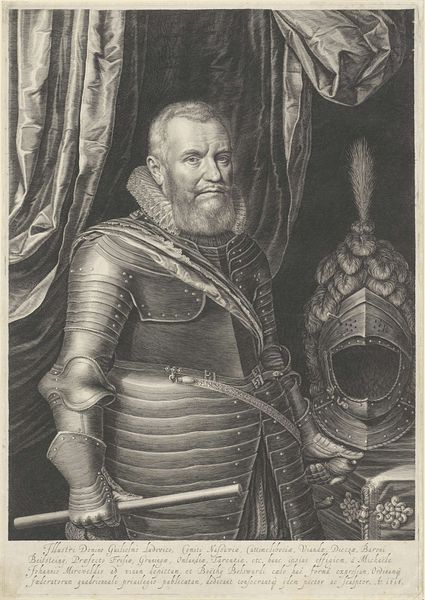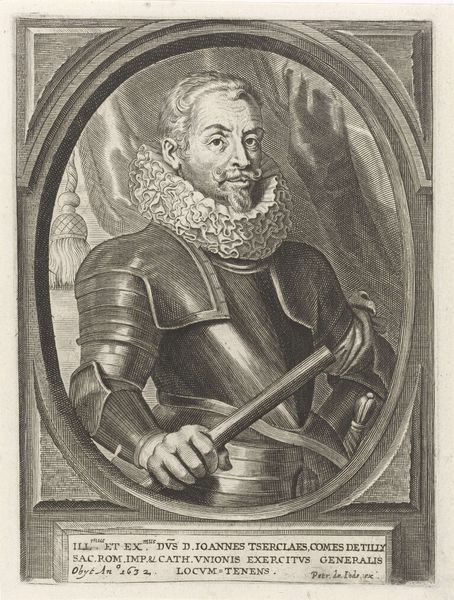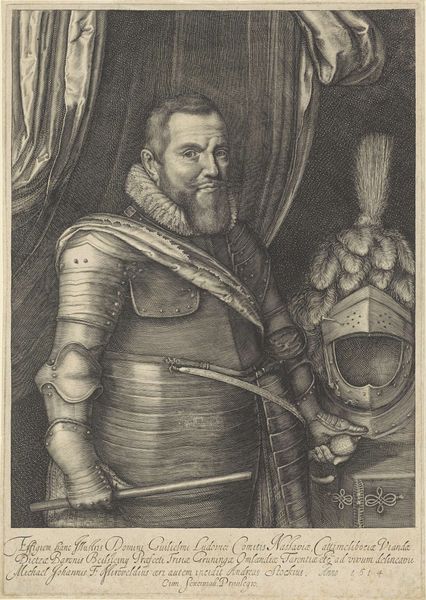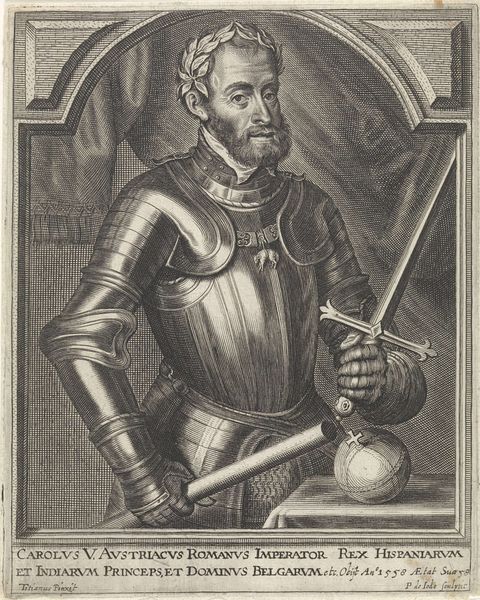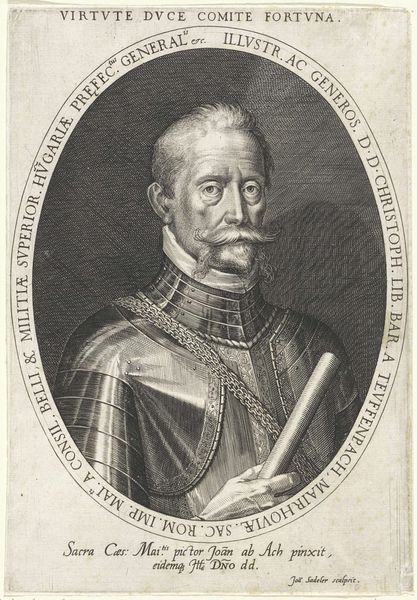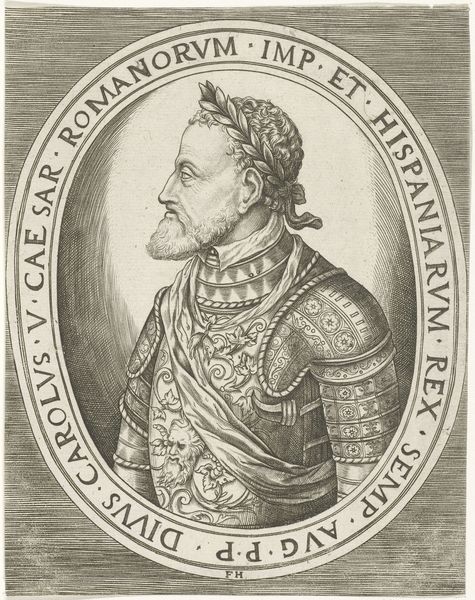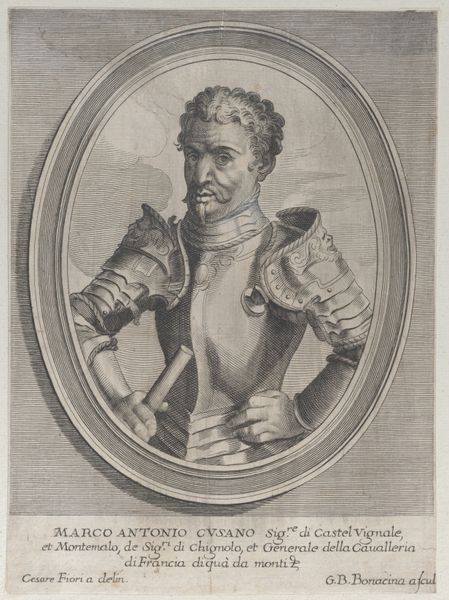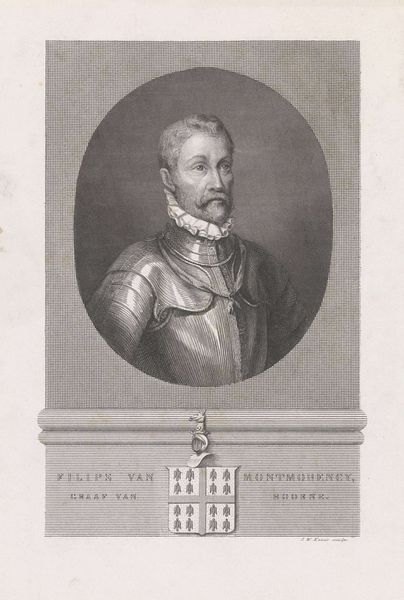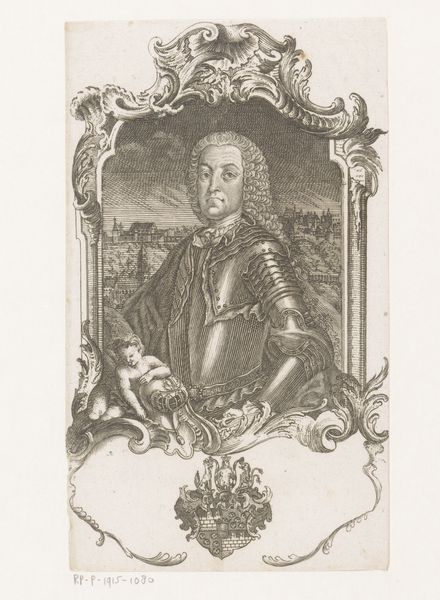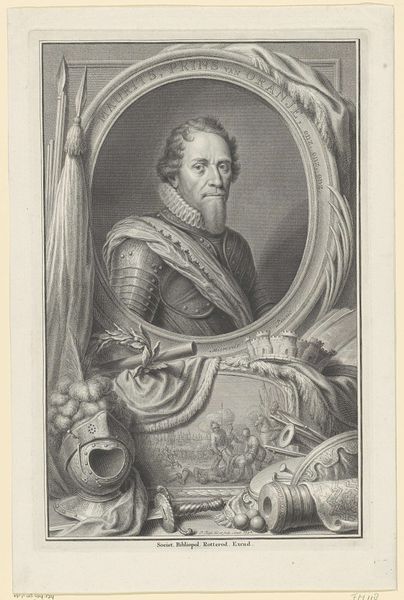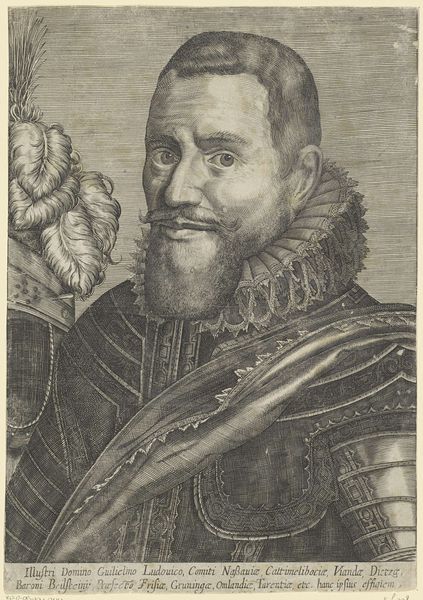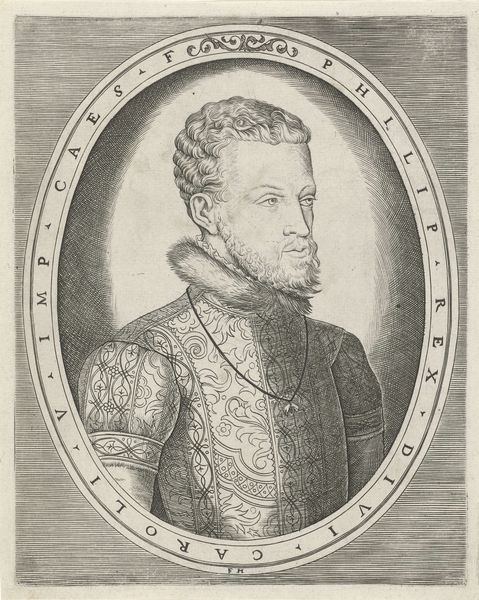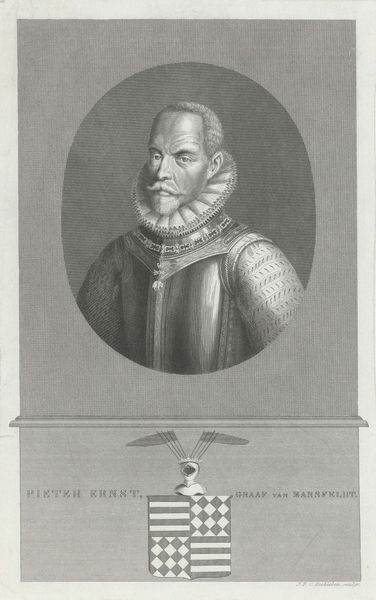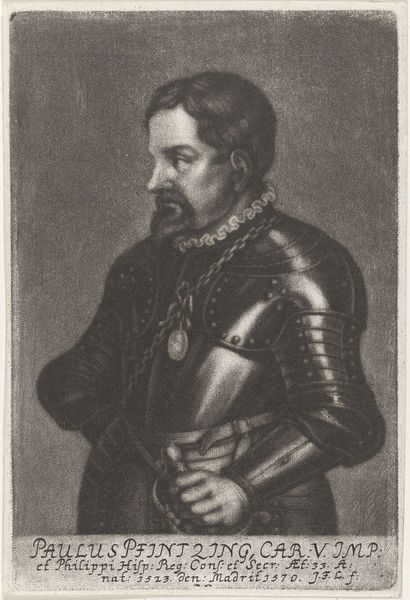
metal, engraving
#
portrait
#
baroque
#
portrait image
#
metal
#
portrait reference
#
portrait drawing
#
history-painting
#
engraving
Dimensions: height 246 mm, width 182 mm
Copyright: Rijks Museum: Open Domain
Pieter Schenk’s print portrays Franz Sigismund, Count of Kiutoszyn, and it’s likely to have been made in the late 17th or early 18th century. Prints like this one circulated widely, playing a vital role in shaping public perception of prominent figures. Sigismund is presented here as a man of both war and peace, symbolized by the Latin inscriptions – Splendidus ille armis, Splendious ille toga – alongside his armor and fur-lined cloak. Consider the context: the Polish-Lithuanian Commonwealth was a major European power, with a complex political system and a deeply entrenched class structure. Schenk, based in Amsterdam, would have been keenly aware of his market. By depicting Sigismund with the visual cues of power and nobility, he tapped into a demand for images of status. To understand the full impact of this print, we can delve into historical records, exploring the dynamics between the Polish aristocracy and the wider European society of the time. The print, therefore, becomes more than just an image; it's a document of its time, shaped by social forces and reflective of institutional power.
Comments
No comments
Be the first to comment and join the conversation on the ultimate creative platform.
